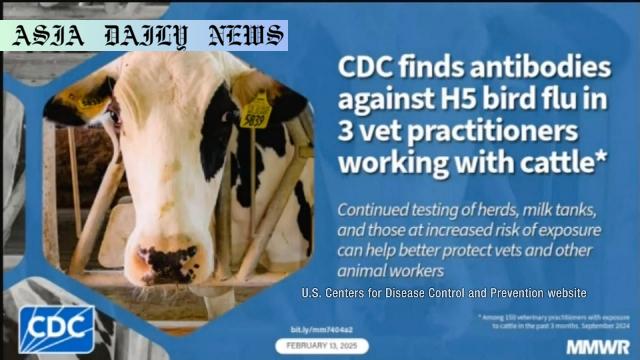Bird Flu: Study reveals evidence of infection in vets treating cattle without exposure to known infected animals.
- Bird Flu: Study finds evidence of infection in 3 US vets.
- None of the vets had symptoms despite positive antibody tests.
- CDC emphasizes risk to the general public remains low.
- Researchers urge more surveillance for better hazard assessments.

Study Brings New Light on Bird Flu in Veterinarians
The ongoing outbreak of H5 bird flu continues to raise concern after a CDC study discovered the virus had infected three veterinarians in the United States. Blood samples collected from 150 veterinary professionals handling cattle showed three of them had developed antibodies to the H5 bird flu strain. This finding suggests these individuals had experienced recent infections, sparking discussions about the virus’s potential reach and transmission vectors.
Unexpected Infection in Vets with No Reported Symptoms
Interestingly, none of the infected vets reported any symptoms typically associated with bird flu, such as respiratory issues or conjunctivitis. Despite this, blood test results confirmed the presence of antibodies for the virus, indicating an asymptomatic or mild form of infection. Notably, these individuals did not recall working directly with animals suspected to carry the virus, aside from one veterinary professional who had been exposed to infected poultry.
Researchers Advocate for Better Monitoring of At-Risk Groups
This revelation has prompted researchers to strongly advocate for systematic monitoring and surveillance of individuals who work closely with animals. Enhanced hazard assessments and proactive health measures could be instrumental in preventing any unexpected transmission from animals to humans, particularly in vulnerable professional groups such as veterinarians and farmworkers.
Broader Context of the Bird Flu Outbreak
The bird flu outbreak in the United States that started last year has heavily impacted dairy and poultry farms, leading to over 68 confirmed cases and one fatality. Although the CDC maintains that the general public faces minimal risk, this new study underscores the importance of vigilance, particularly among those working in animal industries. Virus strains like H5 bird flu can evolve rapidly, potentially leading to scenarios that may pose greater risks to humans in the future.
Takeaway: The Need for Proactive Measures
While these findings should not cause public alarm, they serve as a clarion call for the veterinary and agricultural sectors to adopt robust monitoring systems. Enhanced surveillance can identify potential zoonotic diseases earlier, thus benefiting not only professionals in these industries but also the general public. With continued research, health authorities can better understand the interplay between animal and human health.



Commentary
Reflection on the Study’s Alarming Findings
The recent discovery of H5 bird flu antibodies in veterinarians who hadn’t knowingly worked with infected animals is both concerning and thought-provoking. It highlights just how interconnected the health of animals and humans truly is. This unique case reinforces the importance of being prepared for the unexpected, especially when infectious diseases cross ecological boundaries. The asymptomatic nature of these cases reminds us of the silent ways in which diseases can circulate before becoming visible threats.
The Vital Role of Surveillance and Science
One of the most critical takeaways from this situation is the necessity for systematic surveillance. Vets, farmers, and other professionals who interact with animals are often on the frontline of emerging zoonotic risks. Researchers’ call for improved monitoring should be heeded urgently, as it’s clear that even minor lapses in tracking such diseases can leave room for unnoticed spread. Additionally, this highlights the critical role of science and research in safeguarding public health. Without studies like this, the asymptomatic infections in these veterinarians might have gone entirely unnoticed.
A Broader Conversation about Preparedness
Ultimately, this study invites a broader discussion about the measures needed to ensure global health security. From rapid testing and vaccinations to extending education programs for frontline professionals, our response systems must be both robust and adaptive. Moreover, the findings reinforce the CDC’s role in public safety and the importance of informing communities about health risks without inciting unnecessary fear. It’s a balancing act, but one worth perfecting.